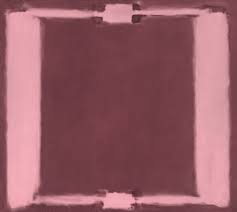Colorfields
INSTRUMENTATION
2 Flutes
2 Oboes
2 Clarinets
2 Bassoons
4 Horns in F
3 Trumpets in C
2 Trombones
Bass Trombone
Timpani
Percussion (2 players)
Piano
Strings
2 Flutes
2 Oboes
2 Clarinets
2 Bassoons
4 Horns in F
3 Trumpets in C
2 Trombones
Bass Trombone
Timpani
Percussion (2 players)
Piano
Strings
Colorfields was commissioned by and is dedicated to the Hamilton College Orchestra, Heather Buchman,
Music Director.
Music Director.
Colorfields, written in the spring and summer of 2007, is an orchestral diptych inspired by the last two
panels in Mark Rothko’s series of five murals made for the Holyoke Center at Harvard University and is a
companion piece to the large scale triptych for choir and orchestra, Kaddish:Passio:Rothko, which was
commissioned by the Music Department of the National Gallery of Art for their Vocal Arts Ensemble and
Chamber Orchestra and which has occupied most of my creative activity throughout 2007. Much of the
instrumental texture of Colorfields involves ever changing timbral patterns over a steady instrumental
texture reminiscent of Rothko’s use of large geometric figures which seem to float over a stead field of
solid color. This is primarily the case in the work’s first movement, in which woodwind, brass and
percussion colors shift constantly over a sort of passacaglia played very slowly in the strings. After a brief
climax the string color field unravels and the focus changes from slow, gradual tonal shifts to quick, motoric
rhythmic cells within an essentially (though not entirely) static harmonic field. This movement’s main
thematic focus lies with the trombones, who lead from the dark moods of the first movement to an
ecstatic climax in the pure light of C major, which represents the white colors at the edges of Rothko’s
otherwise dark canvas in Panel V. The dichotomous moods in these two musical “panels” represent the
theme of death and rebirth which was at the center of Rothko’s work in the Harvard Murals.
panels in Mark Rothko’s series of five murals made for the Holyoke Center at Harvard University and is a
companion piece to the large scale triptych for choir and orchestra, Kaddish:Passio:Rothko, which was
commissioned by the Music Department of the National Gallery of Art for their Vocal Arts Ensemble and
Chamber Orchestra and which has occupied most of my creative activity throughout 2007. Much of the
instrumental texture of Colorfields involves ever changing timbral patterns over a steady instrumental
texture reminiscent of Rothko’s use of large geometric figures which seem to float over a stead field of
solid color. This is primarily the case in the work’s first movement, in which woodwind, brass and
percussion colors shift constantly over a sort of passacaglia played very slowly in the strings. After a brief
climax the string color field unravels and the focus changes from slow, gradual tonal shifts to quick, motoric
rhythmic cells within an essentially (though not entirely) static harmonic field. This movement’s main
thematic focus lies with the trombones, who lead from the dark moods of the first movement to an
ecstatic climax in the pure light of C major, which represents the white colors at the edges of Rothko’s
otherwise dark canvas in Panel V. The dichotomous moods in these two musical “panels” represent the
theme of death and rebirth which was at the center of Rothko’s work in the Harvard Murals.
Colorfields

